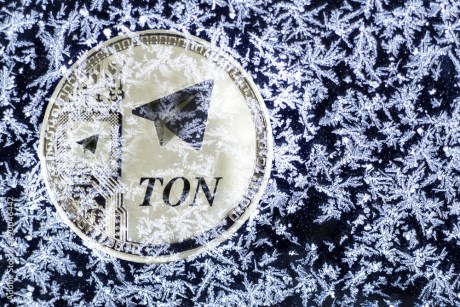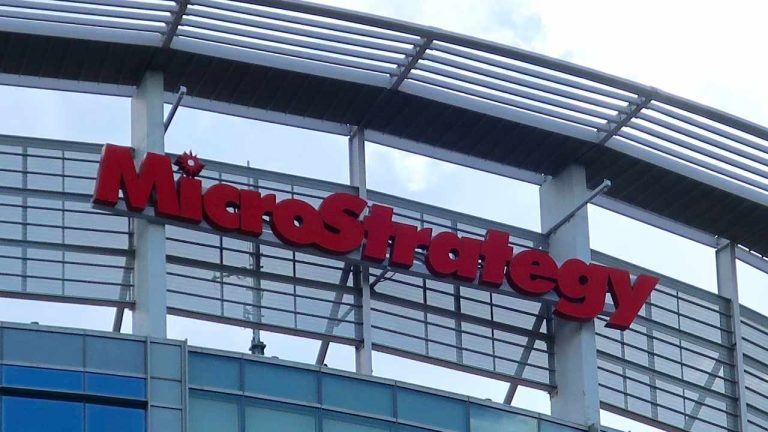This resurgence is not only reshaping the energy landscape but also redefining how tech giants like Microsoft, Google, and Amazon power their ever-growing data centers. The recent decision to reactivate Pennsylvania’s long-dormant Three Mile Island nuclear plant epitomizes this shift, signaling a broader trend toward embracing nuclear power as a viable, carbon-free energy source.
The Three Mile Island facility, infamous for the 1979 meltdown that resulted in the worst nuclear accident in U.S. history, is set to restart operations after a five-year hiatus. Constellation Energy, the plant’s owner, has inked a 20-year power purchase agreement with Microsoft to supply energy to the company’s AI-driven data centers. While Unit 2 of the plant, which suffered the historic meltdown, remains decommissioned, plans are underway to bring back Unit 1, which was closed in 2019 due to economic reasons.
The working cooling towers of Exelon Generation Unit 1 in the foreground are emitting water vapor. The dormant cooling towers are from Unit 2, which was permanently damaged in the 1979 accident.
Three Mile Island, Source: Wikipedia Commons
Under this new agreement, Unit 1 will inject an additional 835 megawatts into Pennsylvania’s energy grid, creating 3,400 jobs and contributing an estimated $16 billion to the state’s economy. Constellation has also announced a rebranding of the site, renaming it the Crane Clean Energy Center in honor of former CEO Chris Crane. Joe Dominguez, Constellation’s current CEO, highlighted the plant’s strong safety record prior to its closure, expressing optimism about its revamped mission. “Before it was prematurely shuttered due to poor economics, this plant was among the safest and most reliable nuclear plants on the grid,” Dominguez stated.
Restoring the reactor is no small feat. Significant upgrades are required, including work on the turbine, generator, transformer, and cooling systems. The U.S. Nuclear Regulatory Commission must approve the plant’s restart, with a tentative go-live date set for 2028. Constellation hopes to secure licenses for operations through at least 2054, signaling a long-term commitment to nuclear energy.
Tech Giants Fueling the Nuclear SurgeThis move by Microsoft is not an isolated incident but part of a larger trend among tech giants turning to nuclear power to meet their colossal energy needs. Google and Amazon have both announced deals involving small modular reactors (SMRs) to power their data centers. Google plans to source power from reactors developed by Kairos Power, while Amazon has invested in X-energy to develop reactors with utilities in Washington and Virginia.
These developments underscore Big Tech’s growing reliance on nuclear energy as the push for data centers to support artificial intelligence intensifies. Analysts predict that U.S. data centers will consume 8% of the national energy output by 2030, with projections suggesting a 160% increase in demand from 2023 levels. As data centers consume more energy, environmental concerns mount. A recent analysis found that the carbon emissions from data centers run by Microsoft, Google, Meta, and Apple could be up to 662% higher than what’s officially reported.
Nuclear energy offers a unique advantage for tech companies: reliable, round-the-clock power with zero carbon emissions. While these companies continue to invest in renewable energy sources like wind and solar, the variability and intermittency of these sources make nuclear an appealing option. Amazon emphasized nuclear’s long history of reliable, carbon-free energy and its potential to scale, stating, “Nuclear power is one part of that mix—it can be brought online at scale and has a decades-long record of providing a reliable source of safe carbon-free energy.”
In a recent conversation with former Navy SEAL and CIA contractor Shawn Ryan, Donald Trump highlighted the potential of nuclear power to bolster America’s energy supply, particularly with the rising demands of artificial intelligence.
“For AI, you will need… more electricity than we have right now,” Trump said, emphasizing that “you’ll need double the energy we produce today just for that one industry if we’re going to lead.”
The Appeal and Challenges of SMRsSmall modular reactors represent a new frontier in nuclear technology. The Department of Energy (DOE) backs SMRs as potentially cost-effective and flexible solutions that could be cheaper, easier to build, and more adaptable in terms of location. Energy Secretary Jennifer Granholm has shown support, appearing at Amazon’s Virginia headquarters event to endorse the initiative.
However, SMRs face significant hurdles. These reactors still await approval from the Nuclear Regulatory Commission, meaning it could take until 2028 or later for these projects to materialize.There’s also the issue of managing dangerous waste from numerous disparate locations. Public opposition and regulatory scrutiny could further delay or derail projects.
Why Nuclear Energy is Making a ComebackThe resurgence of nuclear energy can be attributed to a confluence of factors. First, the insatiable energy appetite of tech companies, driven by the exponential growth of AI and data processing, necessitates a stable and substantial power supply. Renewable sources, while essential to a sustainable future, currently lack the consistency and capacity to meet these demands independently.
Second, the pressing need to reduce carbon emissions aligns with nuclear power’s zero-carbon footprint during operation. As climate change concerns intensify, nuclear energy presents a practical alternative to fossil fuels. The Intergovernmental Panel on Climate Change (IPCC) has identified nuclear energy as a key component in the portfolio of solutions to mitigate global warming.
Third, advancements in nuclear technology, such as SMRs, offer the promise of safer, more efficient reactors that can be deployed in a variety of settings. These innovations could alleviate some of the public’s longstanding fears associated with nuclear power, particularly regarding safety and waste management.
Lastly, government support plays a crucial role. The Biden administration’s backing of nuclear initiatives provides not only financial incentives but also regulatory momentum. By promoting an “all of the above” energy policy, the government is paving the way for nuclear energy to re-enter the mainstream energy mix.
While the revival of nuclear energy addresses some pressing challenges, it is not without controversy. The history of nuclear accidents, from Three Mile Island to Chernobyl and Fukushima, casts a long shadow over public perception. Safety concerns, waste disposal issues, and the high costs associated with nuclear projects cannot be ignored.
However, dismissing nuclear energy outright would be shortsighted. The urgency of climate change demands that we explore all viable options to reduce greenhouse gas emissions. Nuclear power, with its capacity for large-scale, continuous energy production, is uniquely positioned to complement renewable sources. It can serve as a bridge technology, facilitating a transition to a fully sustainable energy future.
The involvement of tech giants could be the catalyst needed to overcome the “valley of death” in nuclear innovation. Their substantial financial resources and vested interest in securing reliable energy could accelerate the development and deployment of advanced nuclear technologies. As Kelly-Detwiler noted, “Tech giants’ power needs could accelerate this new technology, which is great because modular nuclear is probably something the industry and the world needs to continue down a decarbonization path.”
Yet, we must proceed with caution. Rigorous safety standards, transparent regulatory processes, and public engagement are essential to ensure that the resurgence of nuclear energy does not repeat past mistakes. Investment in research and development should also focus on solving the long-term waste disposal problem, perhaps through technologies like nuclear recycling or advanced reactors that can utilize spent fuel.
And if we can convert some of that new nuclear energy towards crypto mining, that would be a game changer, indeed.
















